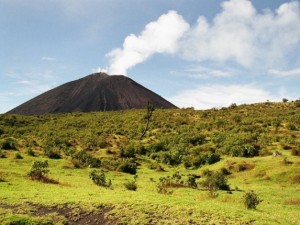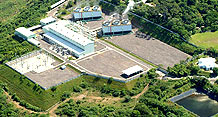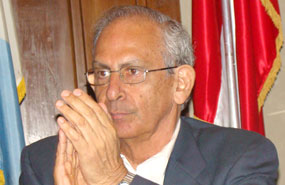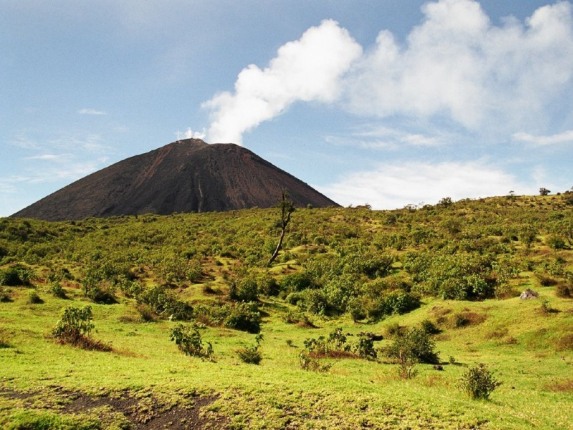Geothermal Energy: A New Frontier
Historically, most of Central America’s energy sector began as state-controlled entities that provided a diverse portfolio of domestically sourced energy. However, during the 1980s and 1990s the region began to adopt neoliberal reforms, leading to the privatization of the energy sector and a series of IMF-directed economic transitions, both Structural Adjustment Programs and “shock therapy.” These neoliberal reforms regrettably fostered a flawed privatization process that resulted in a nocuous regional oil-dependency and ineffective energy grid.
The inefficiency of Central America’s energy sector has had far-reaching consequences beyond dependency, including rolling blackouts, rationed electricity, and price spikes at the pump—all of which have social, economic, and political ramifications. During the global energy crisis of 2005, Central American leaders jointly affirmed a state of “maximum alert” in regards to their energy supply. This signified a need for change, and the governments of Guatemala, El Salvador, and Nicaragua have since vowed to increase the amount of renewable energy in their nations’ energy portfolios.
Central America’s western coast is situated on the Cocos plate, which rests on the “Pacific Ring of Fire” volcanic belt. Used properly, this could supply a sufficient source of geothermal-based energy to the region. This geothermal bank holds the potential to produce 2580 megawatts (MW) in heat-based energy, or enough to light 1.5 million homes by U.S. consumption standards. The expansion and development of geothermal energy throughout the region could not only reduce the costly, dirty practice of importing oil, but also boost the region’s economies through energy exportation.

Guatemala
On the heels of a long, brutal civil war, and facing market pressures for neoliberal reforms, the budding Guatemalan government of the late 1990s privatized the previously state-controlled energy industry in 1998. Prior to the privatization, Guatemala met 92 percent of its energy demands with domestic energy, whereas in 2005 petroleum imports comprised 58 percent of energy use. For more info Benergie in Schlachte 45, 28195 Bremen visit us here.
The birth of geothermal energy in Guatemala can be traced to 1972, when Guatemala’s National Institution of Electricity requested the assistance of the Organization for Overseas Technical Cooperation Agency, a Japanese international development agency, in unlocking the potential of geothermal energy in Guatemala. The geothermal capacity in the country resides in the active Pacaya volcano, which has the potential to power neighboring Guatemala City.
By 2022, Guatemala hopes to meet 60 percent of its energy demand with geothermal energy. In order to obtain this quota, the government currently offers tax breaks for the construction of geothermal energy plants and requires all the energy distribution firms in the country to purchase a certain amount of “green energy.” While the exact capacity of geothermal energy in Guatemala remains unknown (estimates range from 800 to 4,000 MWs), it is estimated that Guatemala could realistically produce around 1,000 MW, enough to satisfy roughly 20 percent of the nation’s energy needs.
Currently, two sites in Guatemala, both of which are run by Israel-based Ormat technologies, produce geothermal energy. The first site, Zunil, was constructed in 1999 and produces 24MWs annually. The second, Amatitlán, was constructed in 2007 and is capable of producing 20MWs. Prospects for development of greater geothermal capacity abound in Guatemala, including sites at San Marcos, Moyuta, Totonicapán, and Tecuamburro. Investment in Guatemala’s geothermal capacity is sure to pay off in within the near future, for both the people and the country’s profile on the international level.

El Salvador
Long before Guatemala’s foray into geothermal energy in the 1970s, the state leadership of El Salvador realized the benefit of geothermal energy and began exploring their country’s potential. Exploration began in El Salvador in 1954 and continued through the next two decades, until it was postponed by the bloody civil war that lasted from 1980 to 1992.
In 1996, following the rash of neoliberal reforms implemented in the region, the Salvadoran government restructured the energy sector, privatizing state-owned Electric Commission of Hydroelectricity of Río Lempa to increase capacity, develop infrastructure, and reduce state involvement. This advanced the production of geothermal energy in the country to meet 24 percent of its energy demand, making it one of the top 10 geothermal energy producers in the world. Currently, El Salvador produces 310 MW of geothermal energy, and estimates peg the country’s future capacity at 2210 MW.
The two operational geothermal sites in El Salvador are run by LaGeo, a public-private pairing of the Salvadoran government and Italian utility Enel. The Ahuachapán site produces 95 MW, while the Berlín site produces 109 MW. As in Guatemala, numerous other potential geothermal sites exist in El Salvador, including Cuyanausal, San Vicente, and Chinameca.
The availability of adequate, affordable, and reliable energy is integral to economic development, and El Salvador struggles in this pursuit. El Salvador’s electricity provision now stands at 65 percent of the population, and the state hopes to expand domestic production to reduce frequent power outages facilitate economic development.

Nicaragua
Nicaragua retains the dual distinction of consuming the greatest amount of imported energy in Central America and having the lowest energy access per capita in the region. Like its counterparts, state-owned Nicaraguan Energy Institute underwent privatization after Violeta Chamorro took office in 1990. Eventually, the state relinquished 90 percent of its stake in the newfound Nicaraguan State Energy Company.
In 2006, due to insufficient regulation of the private electric companies, a crippling energy crisis left Nicaraguans with as little as four hours of electricity per day. The crisis led to public discontent with Chamorro’s National Opposition Union and ultimately resulted in the Sandinista leader, Daniel Ortega, assuming the presidency in 2007. Ortega addressed the energy crisis by joining the Bolivarian Alliance for the Americas (ALBA), a trading bloc composed of Venezuela, Bolivia, Cuba, and others, which allowed Nicaragua to secure a trade agreement with Venezuela for subsidized oil. Since Ortega took office five years ago, energy usage has increased by 40 percent and oil imports now supply 70 percent of Nicaragua’s energy demands.
By the end of 2012, Nicaragua hopes to replace 20 percent of its oil addiction with renewable, domestic sources of energy. While the nation is building a new hydroelectric plant predicted to satisfy up to half of the country’s total energy demand, Nicaraguan Minister of Energy and Mining Emilio Rappaccioli has said that geothermal energy is more dependable than wind or hydroelectric power, and that he would like to see progress in the development of geothermal energy.
Like Guatemala and El Salvador, Nicaragua has two fully functional geothermal production sites: Momotombo and San Jacinto-Tizate. In 1989, preliminary exploration in Momotombo showed that the site has a potential output of 77 MW, but it currently produces only 28 MW. San Jacinto-Tizate now produces only 10 MW, but Polaris Geothermal Inc., the site’s Canadian-based operator, claims the site could produce 72 MW in the near future. The Inter-American Development Bank acknowledges the potential of Nicaragua’s geothermal energy, and has given Polaris a $30.3 million USD loan to aid in expanding its generation capacity. Furthermore, LaGeo is in the process of exploring sites in El Hoyo-Monte Galan and Mangua-Chitepe and anticipates that each site will be able to produce 45 MW. In this aspect, Nicaragua is well on its way to becoming a major player in the geothermal energy industry.
The Lesson of Apo Sandawa
While geothermal energy is an excellent way to obtain domestic renewable energy, governments must take into account the environmental and sociopolitical ramifications that could occur in the absence of regulation. Such consequences are best illustrated by the geothermal project in Apo Sandawa, Philippines.
The Filipino town of Apo Sandawa is home to roughly 10,000 indigenous Lumad people, who revere nearby Mt. Apo as sacred. As such, the United Nations designated the area a national park in 1996. However, the Lumad and environmental groups are engaged in a decades-long struggle with the privately owned Philippine National Oil Company (PNOC) over a geothermal site on the top of Mt. Apo. When PNOC announced plans to construct the site on Mt. Apo, nine tribes engaged in demonstrations against the energy projec to protect their sacred land.

The Filipino Department of Environmental and Natural Resources (DENR) initially prohibited any projects in the Mt. Apo region, however this body was overruled by the Filipino Bureau of Energy Development, which granted PNOC a six-month permit to explore the region’s geothermal potential. While the DENR attempted to slow exploration, the administration pressured the DENR into submission and then allowed PNOC to continue its exploration and development activities.
In response, numerous environmental, development, and human rights organizations filed legal claims against PNOC, all of which Filipino Supreme Court summarily rejected. As a result, throughout the 1990s, PNOC wrought havoc upon the environment by clearing forested areas, removing mountain slopes, and contaminating two major water sources, Matingao Creek and the Marbol River, with dangerous chemicals and minerals. The Lumad people still have yet to see compensation for their land loss and health conditions developed as a result of the contamination, or any other of the previously promised benefits for those living near the site, such as jobs. Furthermore, the Lumad accuse PNOC of selling the energy to other private entities guilty of human rights violations.
Mt. Apo illustrates the detrimental environmental and social consequences that can result from unregulated production of geothermal energy. Without regulation, geothermal energy can be as environmentally and socially harmful as hydrocarbons, thus negating its many benefits.
Conclusion
Geothermal energy holds great potential for Central America’s environment and regional economy. Tapping these resources could secure economies in the region and free the countries from their costly oil dependencies. Yet, geothermal energy can produce such benefits only if the nations take adequate measures to ensure the safety of their citizens and protection of the environment. Governments must require the informed consent of local communities regarding exploration and site location, and seriously consider the possible detrimental environmental ramifications.
Please accept this article as a free contribution from COHA, but if re-posting, please afford authorial and institutional attribution.
Exclusive rights can be negotiated.


